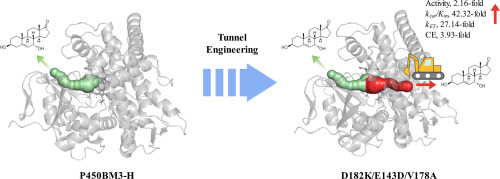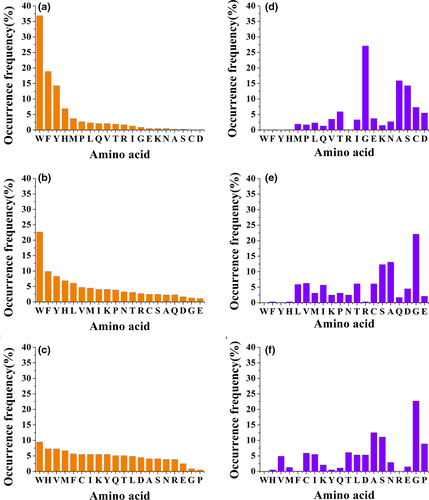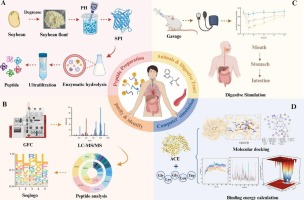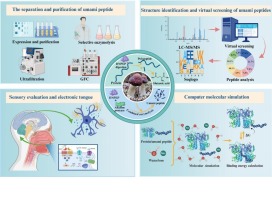Shuting Tang, Daoyou Chen, Huming Shen, Zhaoting Yuan, Hao Wei, YingHui Feng, Li Li, Juan Dong, Lujia Zhang
Functional peptides that are derived from natural protein-rich foods possess a wide range of physiological and pharmacological properties and have become ideal alternatives to chemical drugs. In this study, two novel ACE inhibitory peptides, GKGLW (IC50 = 34.96 μM) and GDGLKW (IC50 = 33.98 μM), were screened and identified from soybeans through sequential stepwise double enzymolysis, and their molecular mechanisms were explored by combining computational simulation. Initially, the optimal combination of alkaline protease and chymotrypsin was determined through the analysis of the enzymatic preferences of five different proteases and the ACE inhibitory activity of their hydrolyzed products. Following purification by ultrafiltration and Sephadex G-25 gel chromatography, the amino acid sequences of the peptides were identified by LC-MS/MS and selectively synthesized based on binding energy. Molecular docking and dynamics simulation/generalized born surface area calculation indicated that the peptides mainly interacted with key residues Ala354, Tyr523, and His353 in the ACE active pocket through hydrogen bonds, and hydrophobic and aromatic amino acids were beneficial to the ACE inhibitory activity of the peptides. Additionally, the two peptides showed good stability in simulating the gastrointestinal digestion process. The antihypertensive effects of these two peptides were further verified in a spontaneously hypertensive rats (SHRs) model. In conclusion, this study successfully identified two ACE inhibitory peptides, GKGLW and GDGLKW, from soybeans by combining proteases with different characteristics for stepwise degradation of soy protein, revealing their potential application value as antihypertensive functional foods.







